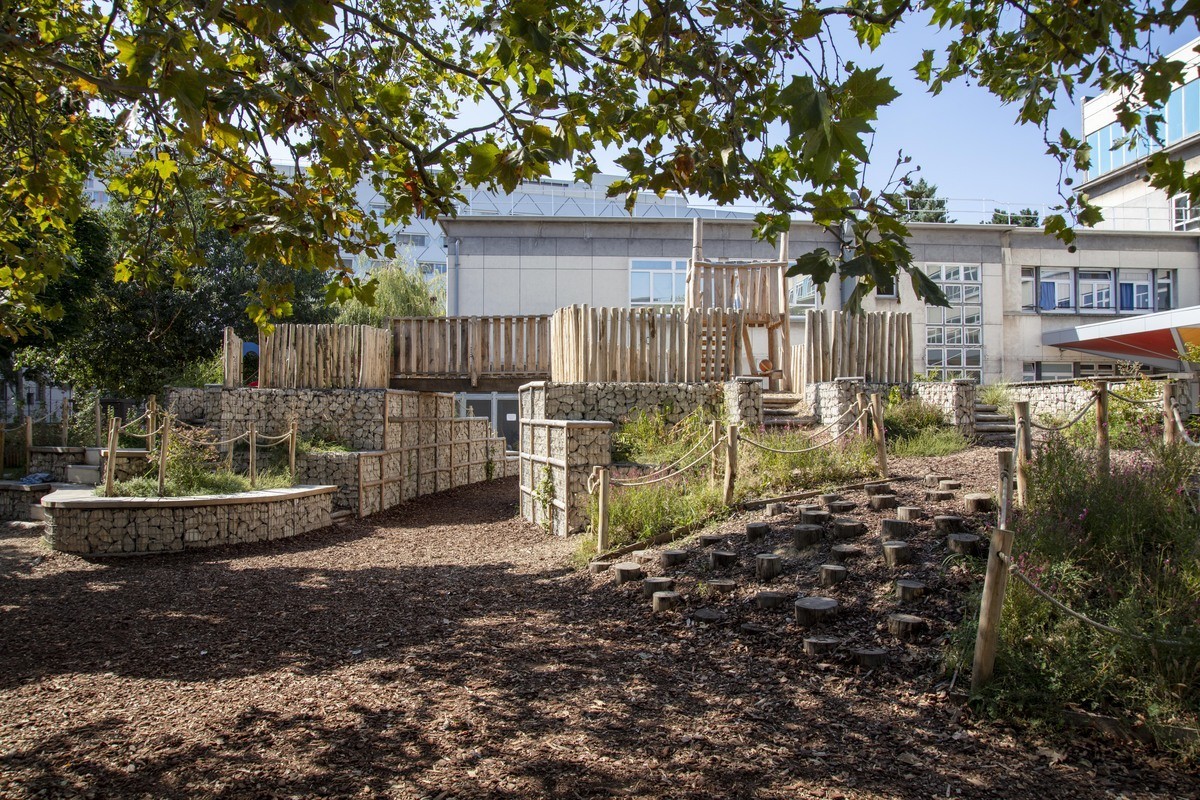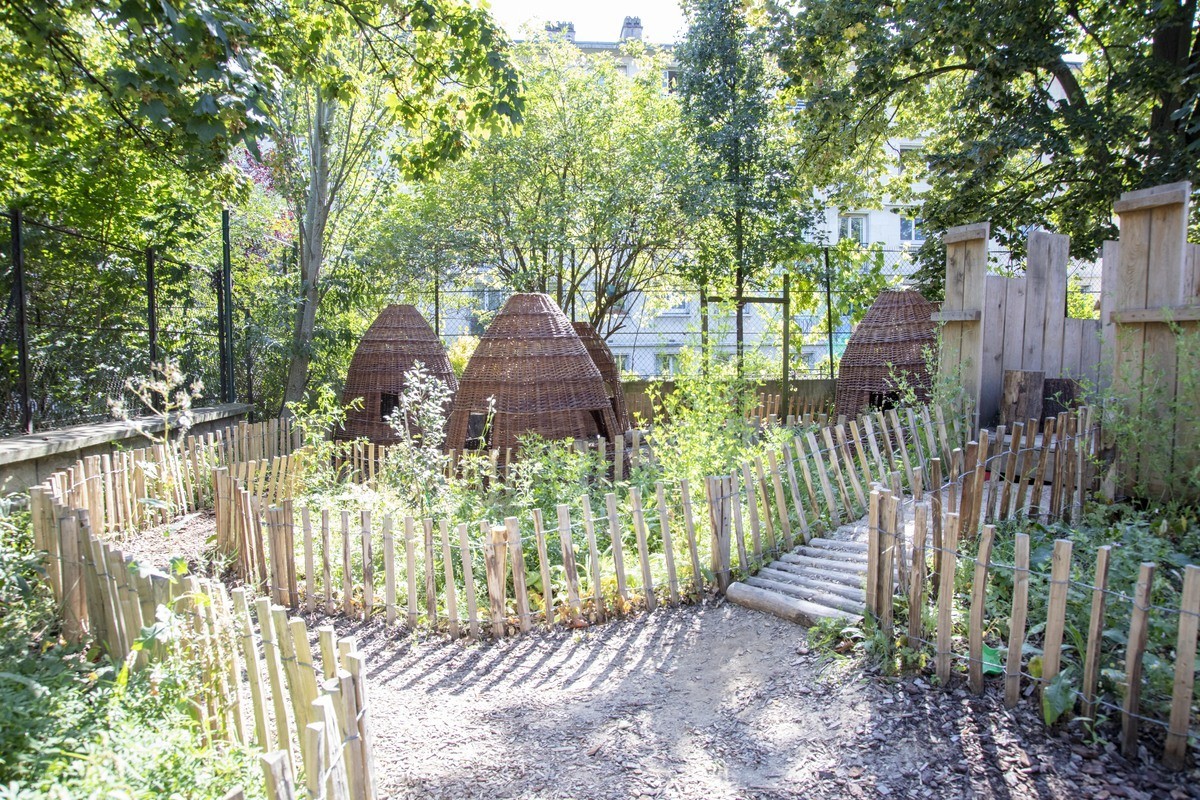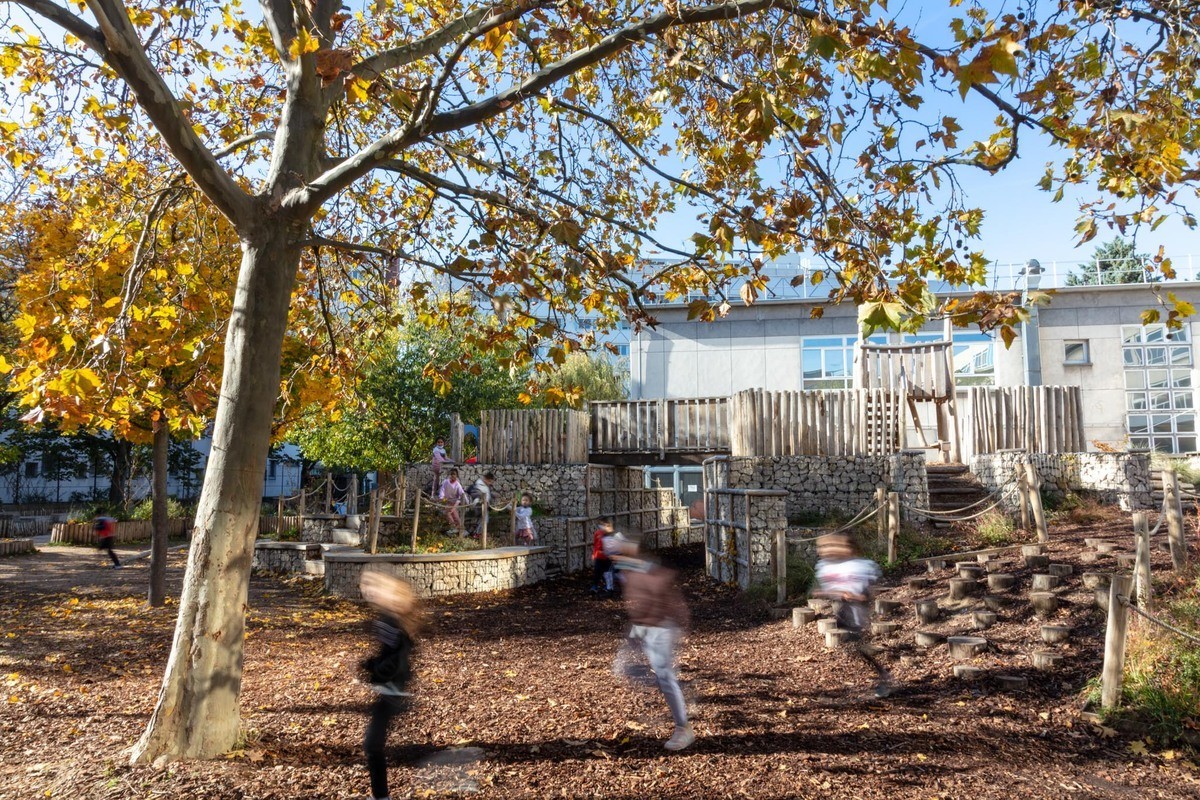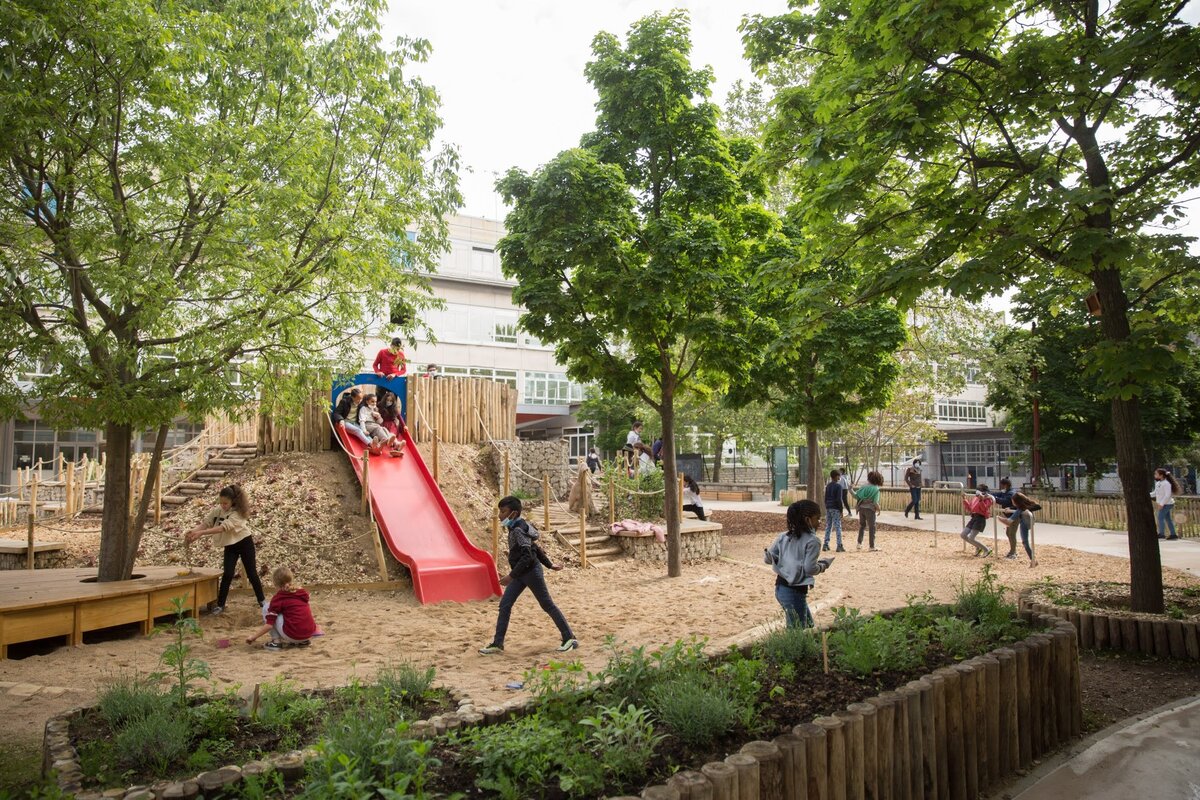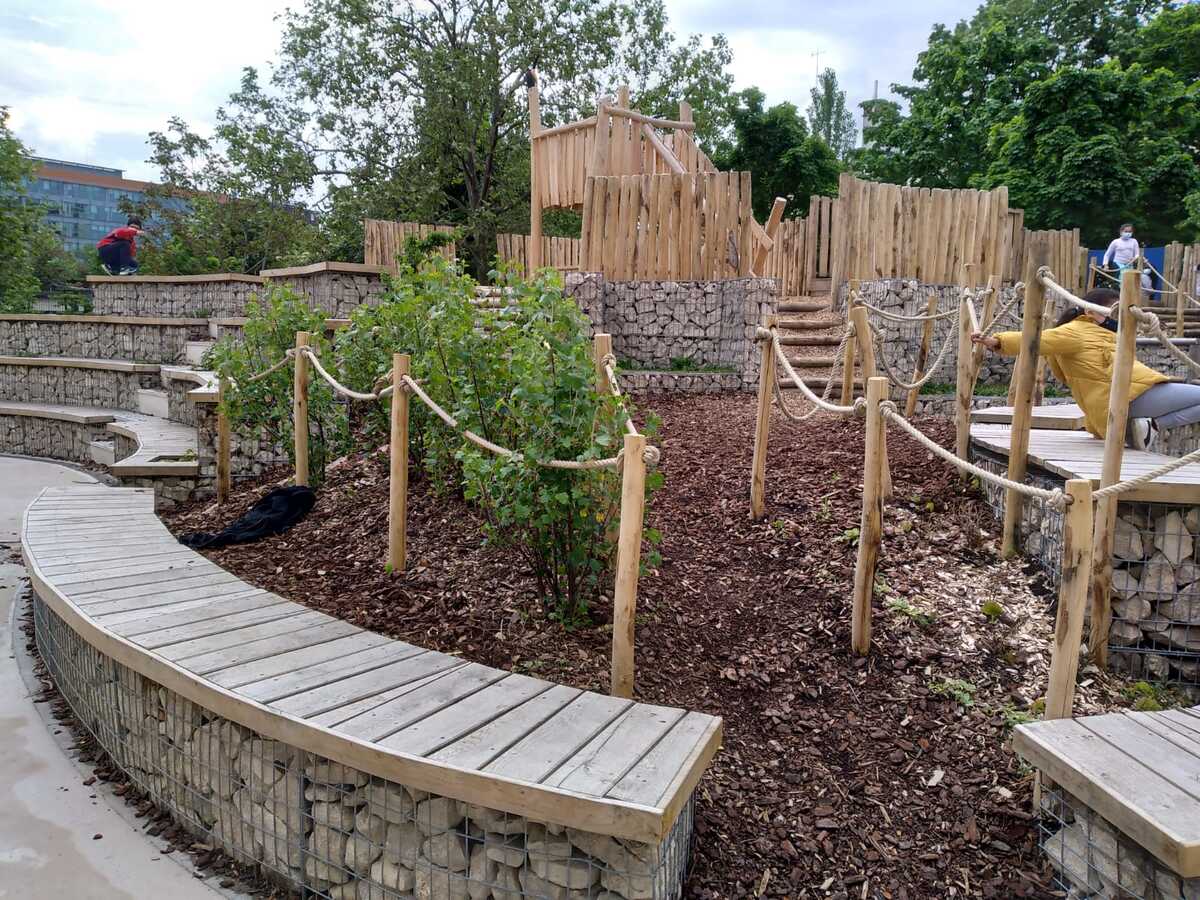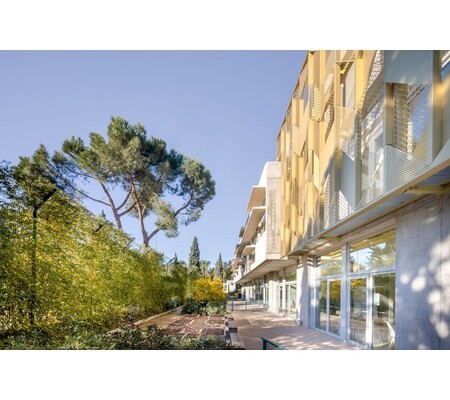Oasis playground for the Maryse Hilsz school
Last modified by the author on 09/02/2023 - 15:23
- Year of commitment : 2020
- Address 1 - street : 18-20 rue Maryse Hilsz 75020 PARIS, France
- Water cycle : Rain water, Collection
- Biodiversity & Ecosystems : / Green and blue corridor, Ground recovery, Environment education /
-
805 935 €
This project won the Sustainable Infrastructure Grand Prize of the Green Solutions Awards France 2022-2023 in a tie with the reconversion of the Seveso “de La Barillais” wasteland into an eco-park and a mention at the international level.
The two vast courtyards of the Maryse Hilsz school group, partly planted with trees, already had a small strip of open ground inaccessible to children. The Oasis transformations made it possible to work on the topography of the place with the creation of relief in the form of high mounds of earth supported by gabions. Modeled to accommodate paths, balance courses, climbing and sliding games, these mounds are also planted with perennials and herbaceous plants, contributing to the effect of plant density. The natural and vegetated areas have therefore been enlarged and shaped to create a variety of sub-spaces that can be appropriated by everyone.
The two courtyards, formerly separated by a linear fence, now have a more flexible limit, materialized only by a river on the ground. The water that flows there comes from the roof of the sanitary facilities and the wall fountains and ends up in a soakaway pit which drains the water towards the planted areas.
Progress Status
Delivered
Data Reliability
Self-declared
Funding Type
Public
Website Enterprise / Infrastructure
https://www.observatoire-oasis.fr/groupe-scolaire-maryse-hilsz/Sustainable Development
Testimony / Feedback
The director of the elementary school bears witness to the change in usage in the yard.
The students talk about their involvement in the design of the project.
Governance
City of Paris
Local Authority
This project was carried out within the framework of a European call for projects, the FEDER UIA . Governance was therefore organized with the entire consortium of partners.
Sustainable Solutions
- Citizen participation
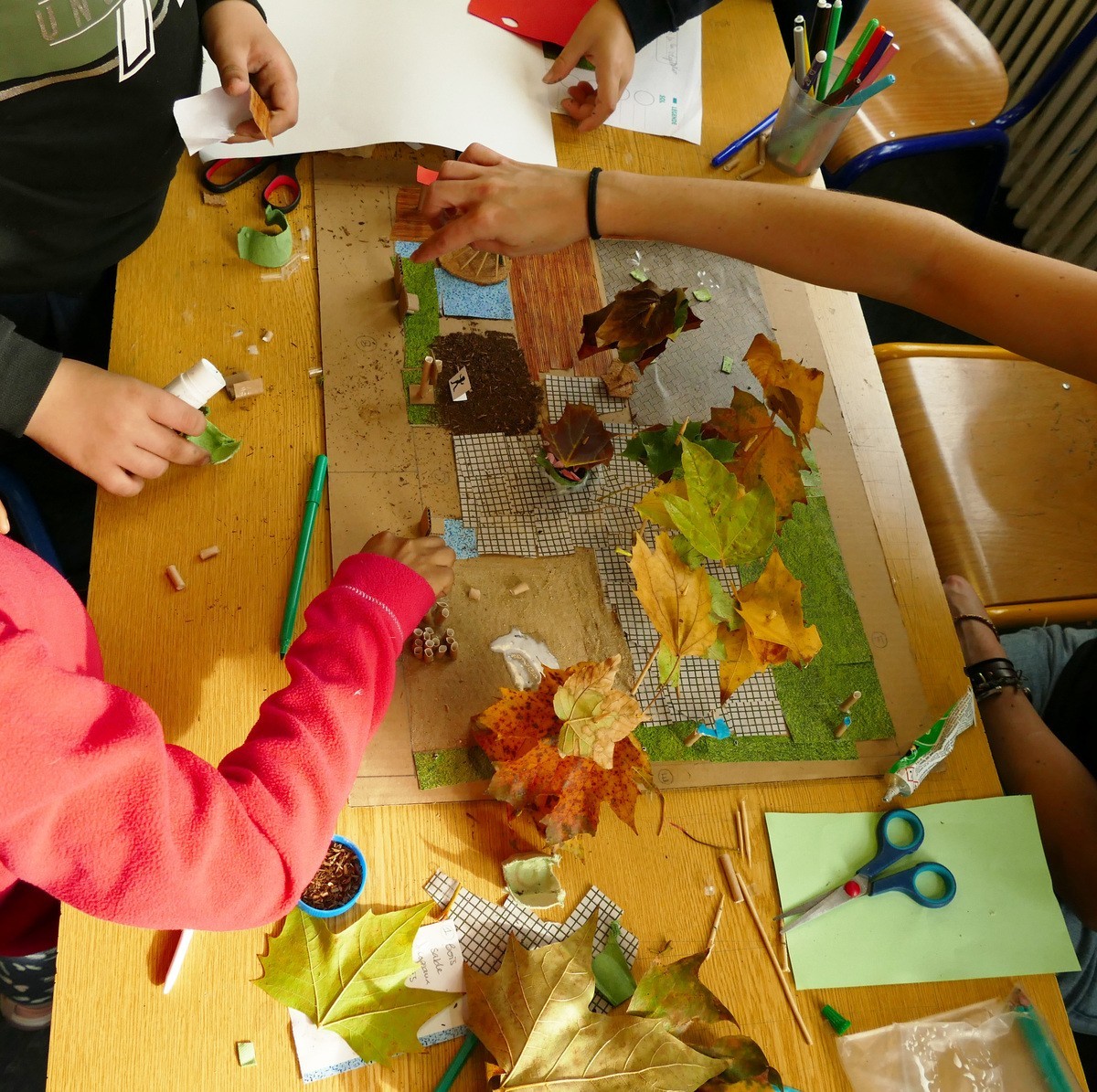
Co-design with users
Associating the pupils of the school and the entire educational team has made it possible to ensure a project that is adapted and appropriated by future users. The involvement of the whole school in favor of the playground transformation project was also necessary for the success of new uses.
Photo credit
CAUE of Paris - Théo Ménivard // City of Paris




